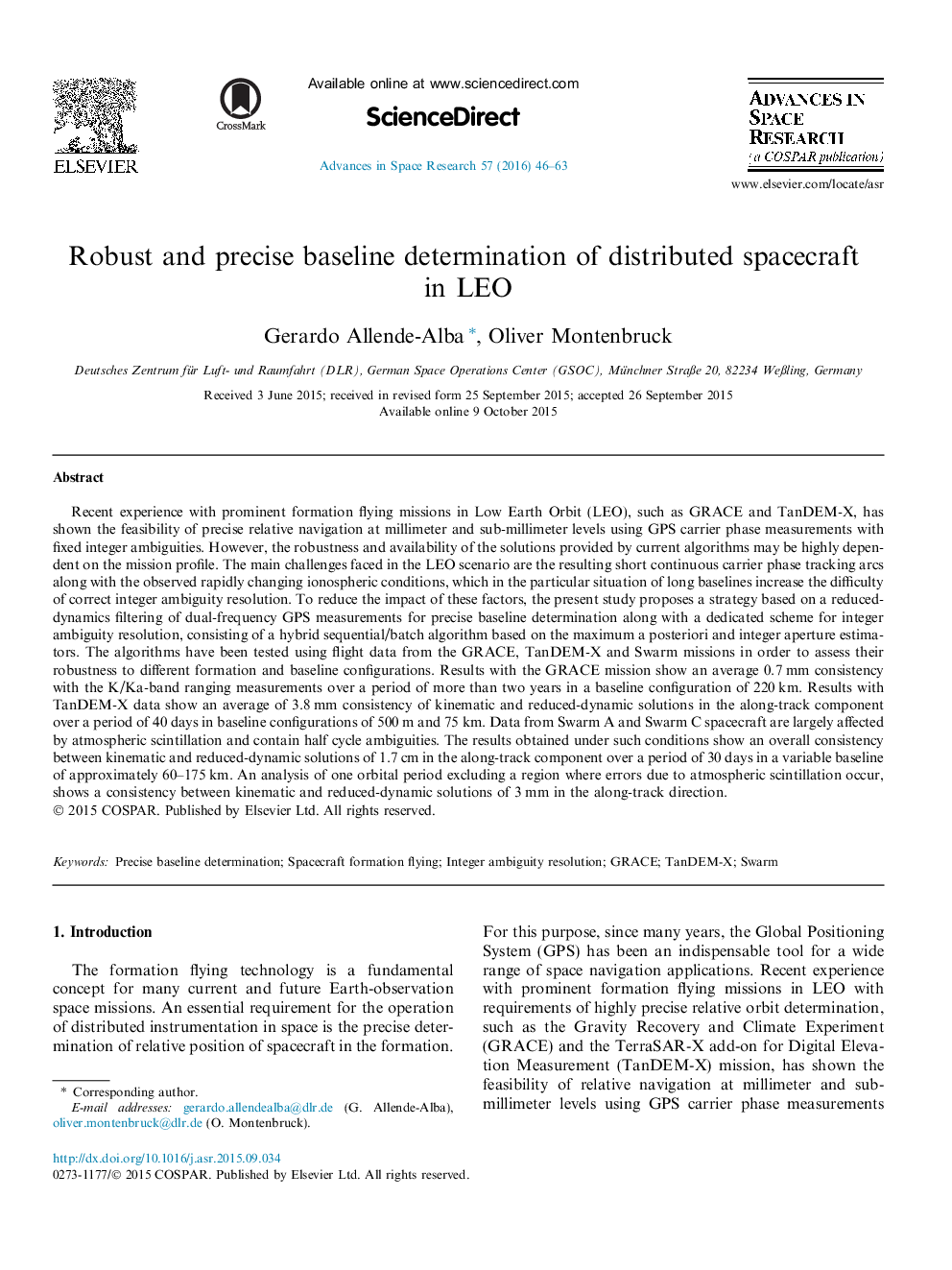| کد مقاله | کد نشریه | سال انتشار | مقاله انگلیسی | نسخه تمام متن |
|---|---|---|---|---|
| 1763936 | 1020031 | 2016 | 18 صفحه PDF | دانلود رایگان |

Recent experience with prominent formation flying missions in Low Earth Orbit (LEO), such as GRACE and TanDEM-X, has shown the feasibility of precise relative navigation at millimeter and sub-millimeter levels using GPS carrier phase measurements with fixed integer ambiguities. However, the robustness and availability of the solutions provided by current algorithms may be highly dependent on the mission profile. The main challenges faced in the LEO scenario are the resulting short continuous carrier phase tracking arcs along with the observed rapidly changing ionospheric conditions, which in the particular situation of long baselines increase the difficulty of correct integer ambiguity resolution. To reduce the impact of these factors, the present study proposes a strategy based on a reduced-dynamics filtering of dual-frequency GPS measurements for precise baseline determination along with a dedicated scheme for integer ambiguity resolution, consisting of a hybrid sequential/batch algorithm based on the maximum a posteriori and integer aperture estimators. The algorithms have been tested using flight data from the GRACE, TanDEM-X and Swarm missions in order to assess their robustness to different formation and baseline configurations. Results with the GRACE mission show an average 0.7 mm consistency with the K/Ka-band ranging measurements over a period of more than two years in a baseline configuration of 220 km. Results with TanDEM-X data show an average of 3.8 mm consistency of kinematic and reduced-dynamic solutions in the along-track component over a period of 40 days in baseline configurations of 500 m and 75 km. Data from Swarm A and Swarm C spacecraft are largely affected by atmospheric scintillation and contain half cycle ambiguities. The results obtained under such conditions show an overall consistency between kinematic and reduced-dynamic solutions of 1.7 cm in the along-track component over a period of 30 days in a variable baseline of approximately 60–175 km. An analysis of one orbital period excluding a region where errors due to atmospheric scintillation occur, shows a consistency between kinematic and reduced-dynamic solutions of 3 mm in the along-track direction.
Journal: Advances in Space Research - Volume 57, Issue 1, 1 January 2016, Pages 46–63